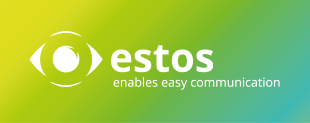Whether digital workplace, workplace of the future or work 2.0: The digital transformation has significant effects on the way we work in the future. In recent years, the emergence of internet-based technologies has laid the foundation for more and more companies to offer their employees independent and flexible ways to work. However, this flexibility can only prove effective if the employees can work together optimally regardless of location. Unified communications software offers the basis for this.
Combining all communication channels in one application
In 2006, the term Unified Communications (UC) was first used. As a further development of Computer Telephony Integration (CTI), UC is all about bundling and unifying all communication channels that an employee of a company frequently uses into a single application. Whether telephone, fax, e-mail or chat: Which communication channel the employee chooses to use is usually just one click away.
Use presence information across different locations
Unified communications software such as ProCall Enterprise improves internal collaboration by, among other things, clearly displaying all employees of a company, including their contact options and current availability. This display of accessibility is referred to as presence management. A professional presence management system incorporates all information sources from which the current availability of a person can be derived. Within the framework of a communication solution, presence provides information about the current availability of a person. In this way, a communication channel suitable to the situation can be chosen to contact a particular person.
Employees who work at different locations also benefit. You can see at a glance whether a certain colleague is present and available. If the desired call partner is at another location, e.g. in a telephone call, a short query can be made via chat.
Flexible working. Even on the move
Mobile devices extend the scope of unified communications from pure desktop applications to smartphones, tablets and more. Through the professional integration of mobile devices with UC software, employees have access to the same information on the move as colleagues at the workplace. Today, modern UC software offers platform-independent access and can be used across all devices. Whether used as an app for the smartphone, Mac, or Windows PC, mobile workers have secure access to all the information they need, anytime, anywhere. This allows them to work efficiently even when out of the office.
Basis for new communication channels to the customer
UC forms the basis to benefit from digital transformation. For example, internet technologies such as WebRTC offer the opportunity to establish new communication channels between the company and the customer. With text and audio/video chats, companies enable their customers to communicate personally and directly via the company's website. Be it as a contact portal where selected employees are visible to the outside world or by simply attaching a multimedia business card with audio/video chat capability in a link in an e-mail. Therefore, visitors to the website can easily get any advice they need before making a purchase or arrange a video consultation appointment without any effort.
Why is the use of UC a strategic success factor for companies?
UC facilitates the communication-intensive processes of companies. This gives you the opportunity to simplify the daily work steps of your employees, minimize sources of error and sustainably improve communication and cooperation both internally and externally. Our numerous references show you how different UC software is used in companies.

